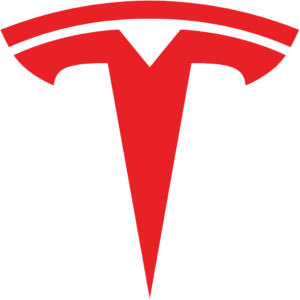Arrgghh! The dreaded Recto-Cranial Insertion (RCI) Syndrome may have crossed the Atlantic! Whether as a result of Ford’s recent management history, or as a result of its working relationship with VW – a staunch member of the German automakers’ RCI Syndrome society – or both, Ford seems to have a fresh (or is deeper?) bout of RCI. Proof positive is Ford’s recent decision not to build its own EV battery plant.
As visions of wrong way Corrigan companies such as Nokia, Sears, Kodak, and Blockbuster float across the sky, Ford, like an aging BrontoTaurus, is gaining speed and losing altitude on its way to joining those once hallowed companies in the graveyard of management ineptness and failed strategic thinking.
Currently there exists a serious shortage of lithium-ion battery capacity in the burgeoning EV and energy storage industries. Tesla’s vehicle production of both current and new models and its solar energy storage business are currently constrained by a shortage of batteries. This will be the case for at least another 12 to 18 months even with Tesla’s forthcoming Battery Day announcements of new and more powerful batteries that are cheaper and faster to produce. Several other EV manufacturers are also battery constrained, among them Jaguar, Audi, Kia and Hyundai, and Honda.
Many current or potential EV manufacturers are moving to assure their own required EV battery supply, often in partnership with established top tier EV battery manufacturers, such as GM is doing with LG Chem in their new Lordstown, OH plant. Other examples of auto companies more aggressively pursuing investments with EV battery manufacturers are: Honda took a 1% stake in CATL and is jointly developing batteries with them. Honda and GM just announced closer ties on new technologies, propulsion systems, purchasing, and other matters. VW is partnering with Sweden’s Northvolt to produce batteries in Germany. PSA Group (Peugeot, Citroen, et al.) is in a joint venture with Total’s Saft to build a battery plant in northern France. VW has also recently invested another $200 million in a US “solid state” battery company QuantumScape, after collaborating with them since 2012 and investing an initial $100 million in them in 2018. Now that’s thinking ahead! Three stars for VW!
But as fast as these new EV battery plants will add to the industry’s production capacity during the next several years the new capacity will be absorbed by increasing consumer demand for EVs and solar energy backup systems such as Tesla’s Powerwalls, Powerpacks, and Megapacks.
With that background, let us now turn our attention to Ford’s press release and Q2 analyst call regarding its dumbfounding battery plant decision.
Ford’s outgoing CEO Jim Hackett stated that there is: “no advantage in [battery plant] ownership in terms of cost or sourcing”. Oh? If not, why are so many other manufacturers committing to it, despite their massive debt loads that are roughly equal to or more than Ford’s?
Hau Thai-Tang, Ford’s head of product development and purchasing, is clearly one of the very brightest bulbs in Ford’s chandelier. In Ford’s analysts call, Thai-Tang is quoted as saying: “…..a company-owned plant can’t be justified financially at annual production levels below 100,000-150,000 units.” This is a remarkable statement – really an admission of the tiny scope of Ford’s EV ambitions and plans. It hardly sounds like Ford is “all in” regarding electric vehicles as Bloomberg News reported in January of 2018, an EV eon ago.
Ford’s heart still isn’t in the EV movement. It remains hooked on the cocaine high of those annual just-short-of-a-million Ford pickup sales that are currently responsible for a large percentage of Ford’s profits. To the extent that it is electric vehicle-focused at all, Ford seems to be inexplicably concentrating on hybrids and plug-in hybrids – a timid (again) toe in the water in response to the battery powered EV movement. Hybrid and plug-in hybrids are merely EVs on training wheels. More expensive than ICE powered vehicles, they cannot be cost competitive with battery (only) powered EVs.
Ford’s battery plant thinking remains clouded by Toyota’s experience of heavily investing in nickel-metal-hydride batteries just as more effective lithium-ion battery technology emerged and now dominates the EV and energy storage battery landscape. Ford doesn’t want to be trapped with an obsolete lithium-ion battery plant when (and if) EV battery technology moves on to the next technology.
But in the opinion of most industry and battery technology experts that next EV battery technology – long rumored to be a “solid state” battery – is years away. Maybe by 2030? Yes, a few labs and/or startups may be able to demonstrate such a prototype device today under ideal conditions, but it will take years to develop these into a product that is cost competitive, can be scaled to high production volumes with high performance and quality yields, and is safe. We’re talking about the production of millions of battery cells a day! In the meantime, the electric lithium-ion powered car and pickup train has left the station!
A recent AutoBeat Daily article quotes Ford’s management as saying that: “…the EV market will take many years to develop….”. This is yet another clue that Ford is out of touch with the current and future speed of the transition from ICE to electric powered vehicles. And even if this market did take “many years” to develop, wouldn’t you rather be a full and knowledgeable and strategically committed participant from the earliest possible point against established players with a wealth of battery technology and production expertise, rather than a late entrant continually behind on the learning and cost curve?
Another clue: An Auto News Europe article quotes Ford executives as insisting that: “…..their plan allows for more flexibility if EV demand falters…..” Why would EV demand falter? Certainly every known EV forecast indicates otherwise. Such a statement is further evidence of Ford’s strategic timidity, lack of understanding of the energy and transportation predictions Tony Seba made in 2014 [Clean Disruption] and he and James Arbib reinforced in 2017 [Rethinking Transportation 2020-2030], as well as Ford’s overwhelming blind faith that their ICE powered pickups will carry their company forward to continued (?) market success.
All this blarney while Ford’s stock, down some 78.6% since 4/1/98, languishes in the range from $9.42 on 1/2/20 to $4.01 on 3/23/20 to $6.95 on 9/2/20. In that same period Tesla’s stock has gone from $86.05 on 1/2/20 to $447.37 on 9/2/20 [prices reflect Tesla’s recent 5:1 stock split]. More than anything stock prices are a reflection of investors’ confidence in a company’s future growth. It’s obvious from the stock prices noted above where that confidence lies.
Jim Hackett (Ford’s current CEO) is quoted as saying that he does not want to migrate Ford capital into owning their own battery factory. What capital? When you consider Ford’s debt of $120 Billion (6/30/2020), they are clearly a bit capital constrained, especially when having to reserve some capital for a possible COVID-19 return and reduced sales and plant shutdowns this coming Fall or next Spring. Consider that the last time Ford went to the market for money in early 2020, it ended up paying an extraordinary 8.5% to 9.625% interest rate on bonds that other companies were obtaining for far less. Ford’s credit potential at reasonable rates for new multi-billion dollar plants may be tapped out. Could it be that Ford’s battery plant decision is really acknowledging that it simply doesn’t have the money to build a $2 to $3 Billion battery plant, or even spend half that to partner with an established Tier One battery manufacturer?
Due to its decision to buy EV batteries at an arm’s length from the globe’s EV battery suppliers, Ford will always be at a disadvantage relative to Tesla, GM, and other competitors. First, they are late to the party in terms of securing supplier quantity and delivery commitments. During 2020, other EV manufacturers have raced to ensure long term battery contracts in significant production volumes with the globe’s primary EV-quality battery manufacturers. Along comes Ford late, and with meager battery quantity demands. Suppliers to Ford: “Get in line, Ford. And oh, by the way, your low quantity demands don’t qualify Ford for the lower prices we are giving to those EV manufacturers who supported or partnered in our plant expansions and are buying from us in vastly higher quantities.”
On a more strategic front, Ford must know deep down that the auto world is rapidly going full electric. And battery technology, its design and chemical makeup, its battery management system, and its production technology lie at the very strategic heart of any EV producer’s product performance, low costs, and sales success. In that case, wouldn’t you want your company to be right at the leading edge of battery knowledge and production capability? Why would you want to be dependent on any supplier — also supplying your competitors — for the heart and soul of your products? Yet that’s the traditional Detroit Big 3 way, and that is the strategic quagmire in which Ford is now trapped, in stark contrast to Tesla and many other competitors. Ford’s thinking appears to be that EV batteries are just another commodity item and it will play the global EV battery suppliers off against one another and squeeze a few more dollars out of their battery sourcing commitments.
Ford’s Thai-Tang is quoted as saying: “…. [with our strategy] we have the competitive tension with dealing with multiple suppliers, which allows us to drive the cost down”. Spoken like a true purchasing guy! If Ford owned its own battery plant, it would drive its battery cost down some 25 to 30% and not have to compete for an adequate quality and quantity of EV batteries! And, more important, it would maintain much greater control of its own destiny.
Is Ford or Thai-Tang trying to tell us that Tesla, with its own unique battery and battery raw material supply chain group, with a contractual relationship with Jeff Dahn and his research group – the leading lithium-ion battery expert in the world, the very same Tesla that has supplier arrangements with Panasonic, LG Chem, and CATL – the globe’s three largest and most advanced battery suppliers — doesn’t know exactly where each battery supplier stands with regard to state-of-the-art battery and battery production research and application?
What is particularly fascinating about Ford’s battery plant stance concerns its inability to control its own destiny. Recently I wrote about VW’s problems ensuring a battery supply for its Chattanooga TN plant where it will produce VW’s new ID.4. SK Innovation (SKI), a relatively new Korean EV battery manufacturer is building a new battery plant in Jackson County, about 65 miles northeast of Atlanta to supply VW’s ID.4 plant in TN. That SKI battery plant in Georgia’s annual capacity will initially only be 10 GW – small by today’s standards. LG Chem’s Q1 2020 battery production was 10.6 times SKI’s. In addition, SKI is supposed to build a second plant in the US to supply Ford’s electric powered F-150 production. This would be a wholly owned SKI plant, not a joint venture with Ford. This plant’s construction hasn’t even started yet. Why would Ford depend on such a new and small battery manufacturer as SKI? Could it be that Ford’s competitors beat it to all the Tier One battery manufacturers’ current and future capacity?
As I reported, SKI stands accused of stealing 77 people and trade secrets/intellectual property from Korean battery maker LG Chem, and the two companies are in a bitter court fight in both the US and Korea. LG Chem is suing to stop SKI from either producing EV batteries in the US, importing production machines to do so, or importing EV batteries from its plant in Hungary. LG Chem won a preliminary ruling in the US International Trade Commission (ITC) Court last Spring, and recently won another ruling in a Korean court just last week. The US ITC Court will issue a final ruling on October 5th of this year. With both VW and Ford now in a considerable state of panic, they as well as the courts in each country are imploring the two companies to settle their legal differences out of court. However, LG Chem is adamant about stopping SKI’s foothold in the US. It might just be a matter of SKI coughing up big dollars in damages to LG Chem. Literally, the jury is out!
If the courts’ rulings continue to go against SKI, Ford is not only late with its SKI battery plant that it has counted on to produce batteries for Ford’s electric F150, but Ford is totally out of luck. A Ford spokesman even dismissed LG Chem’s assertions that it could supply Ford’s SKI supply requirements, noting that LG Chem was already stretched too thin to be dependable. So Ford is walking a tightrope with no safety net! And still they made this no battery plant decision! Ford appears to have totally inadequate control of their EV battery destiny — and therefore its future electric vehicle production and sales!
I am left to wonder if Ford ever considered buying a battery company. Or they could have at least partnered with a leading battery supplier in building a co-owned battery plant. It is probably too late for those options now. Ford could have done that five years ago and been so far ahead today if they were really serious about producing EVs. They weren’t, and IMO today they still aren’t.
Ford’s new CEO Jim Farley, scheduled to be officially on the job October 1, 2020 is known as a “car guy”. In Detroit lingo, that means a guy who lives and breathes ICE powered vehicles. Indeed, Farley restores ICE powered vehicles and races them on many weekends. It is not clear to me that – like Jim Hackett – Farley is the CEO to lead Ford Motor Company into the age of EVs. Farley is known as a workaholic. He is known to charge straight forward and hard. But will he be charging at the right target? And can his leadership style prevail when a different more visionary more EV-aspirational style might produce better results and alienate fewer employees beneath him? Farley swears he is a huge electric vehicle advocate. Maybe, but by supporting this battery plant decision, he doesn’t seem to appreciate the intensity of the game in which Ford has to compete in the auto industry’s transition to EVs.
There is supreme irony in this entire Ford battery scenario. In a first at Ford for its electric vehicles, its Mustang Mach-E crossover, designed and developed by its Ford Team Edison group in Detroit’s Corktown, seems to be a winner – – at least in early appraisals from a distance. We don’t have real world driving impressions and mileage ranges and performance figures yet, nor can we be assured that the Mach-E’s product launch won’t be a disaster as was Ford’s recent 2020 Explorer launch. With its planned product release in the Fall of 2020 already delayed, the Mach-E’s production first year 2021 production run is limited to about 50,000 vehicles. Why? Ford won’t have enough batteries to make any more Mach-Es in that year.
Hau Thai-Tang was Ford’s lead executive in explaining to the press the rationale behind Ford’s battery plant decision. But Ford’s decision had to come from above Thai-Tang – direct from Farley, Hackett, and Ford’s Board. In my judgement, Ford will rue this decision for years to come. There is no turning back on it as by the time Ford might do so, it will be even later in the game. In fact, by then the game will be over for Ford.
If VW can emerge a successful player in the EV game (and, as I have said, I think they will, eventually), they might pick up some of Ford’s pieces – maybe Ford’s truck business, though by then it will have been decimated by Tesla’s Cybertruck and its many offshoot models.
This is corporate management drama and strategy at its highest level – a teaching moment for the entire auto and EV industry. What an exciting decade some auto companies have before them. For Ford, not so much.
Image courtesy of Pixabay
Your feedback in the form of comments or suggestions are welcome in the comment window. Thank you for following my blogs on this site and for participating in my blogging community.




